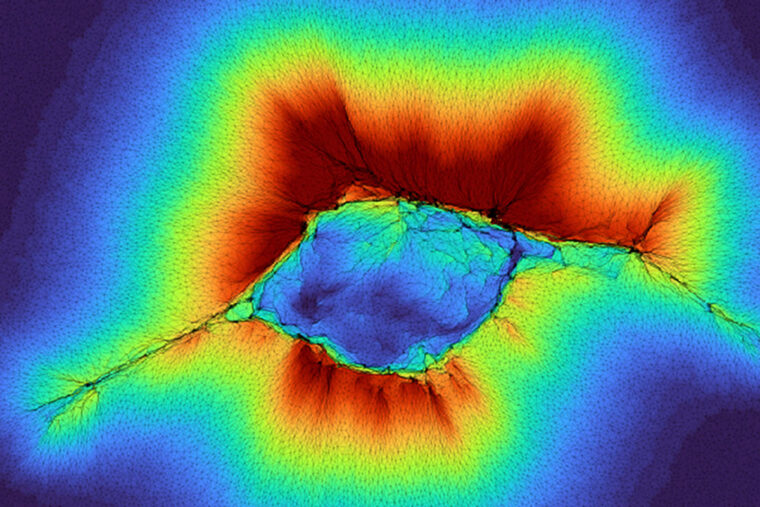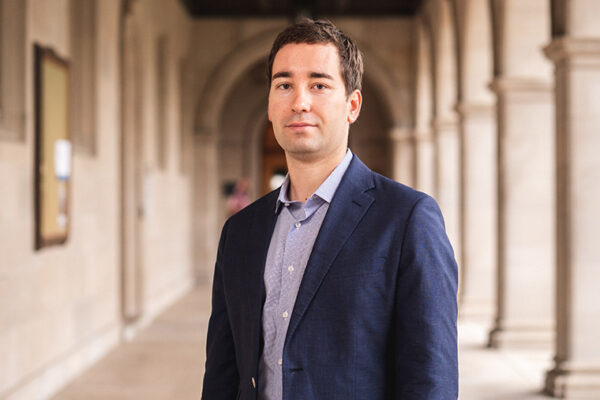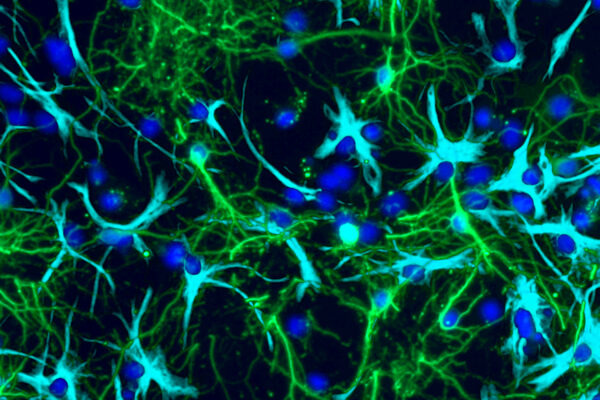The story of the princess and the pea evokes an image of a highly sensitive royal young woman so refined, she can sense a pea under a stack of mattresses. When it comes to human biology, it also takes an abnormal individual to sense far beyond its surroundings, in this case, a cancer cell. Now, researchers also know that normal cells can pull a similar trick by working together.
Research published in the journal PNAS from engineers at Washington University in St. Louis offers a clearer picture of how cells can sense beyond their direct environment. The research can help further the understanding of how cancer moves and point to potential targets to stop that migration.
Amit Pathak, a professor of mechanical engineering and materials science at the McKelvey School of Engineering, explained that “depth mechano-sensing” is how cells sense beyond what they are attached to. In previous research, he and colleagues discovered that abnormal cells with a “high front-rear polarity” (indicative of migrating cells) can sense the farthest depth, up to 10 microns beyond their adhered environment.
Part of that sensory ability has to do with how the cell deforms the surrounding fibrous collagen to reach out into extracellular matrix (ECM) and “feel” the next layer, whether that’s a hard tumor, soft tissue or bone just around the bend. The single abnormal cell can “feel” the stiffness of the ECM and set its course based on that input.
The new research shows that a collective of epithelial cells, found on the surface of tissue, can do the same and then some, working together to muster enough force to “feel” through the fibrous collagen the layer as far as 100 microns away.
“Because it’s a collective of cells, they are generating higher forces,” said Pathak, who authored the research along with PhD student Hongsheng Yu.
According to their models, this occurs in two distinct phases of cell clustering and migration. What those clustering cells “feel” will impact migration and dispersal.
The extra sensing power of cancer cells means that they can get out of the tumor environment and evade detection, migrating freely thanks to their enhanced sense of what’s ahead, even in a soft environment. Researchers’ next step will be understanding how that works, and if certain regulators allow for the range. Those regulators could be potential targets for cancer therapy. If a cancer cell can’t “feel” its way forward, its toxic spread may be put in check.
This story originally appeared on the McKelvey School of Engineering website.
Hongsheng Y, Pathak A. Emergent depth-mechanosensing of epithelial collectives regulates cell clustering and dispersal on layered matrices. PNAS, Sept. 11, 2025. DOI:
https://doi.org/10.1073/pnas.2423875122
Funding for this research was provided by the National Institutes of Health (NIH) (R35GM128764) and National Science Foundation, Civil, Mechanical and Manufacturing Innovation (2209684).



